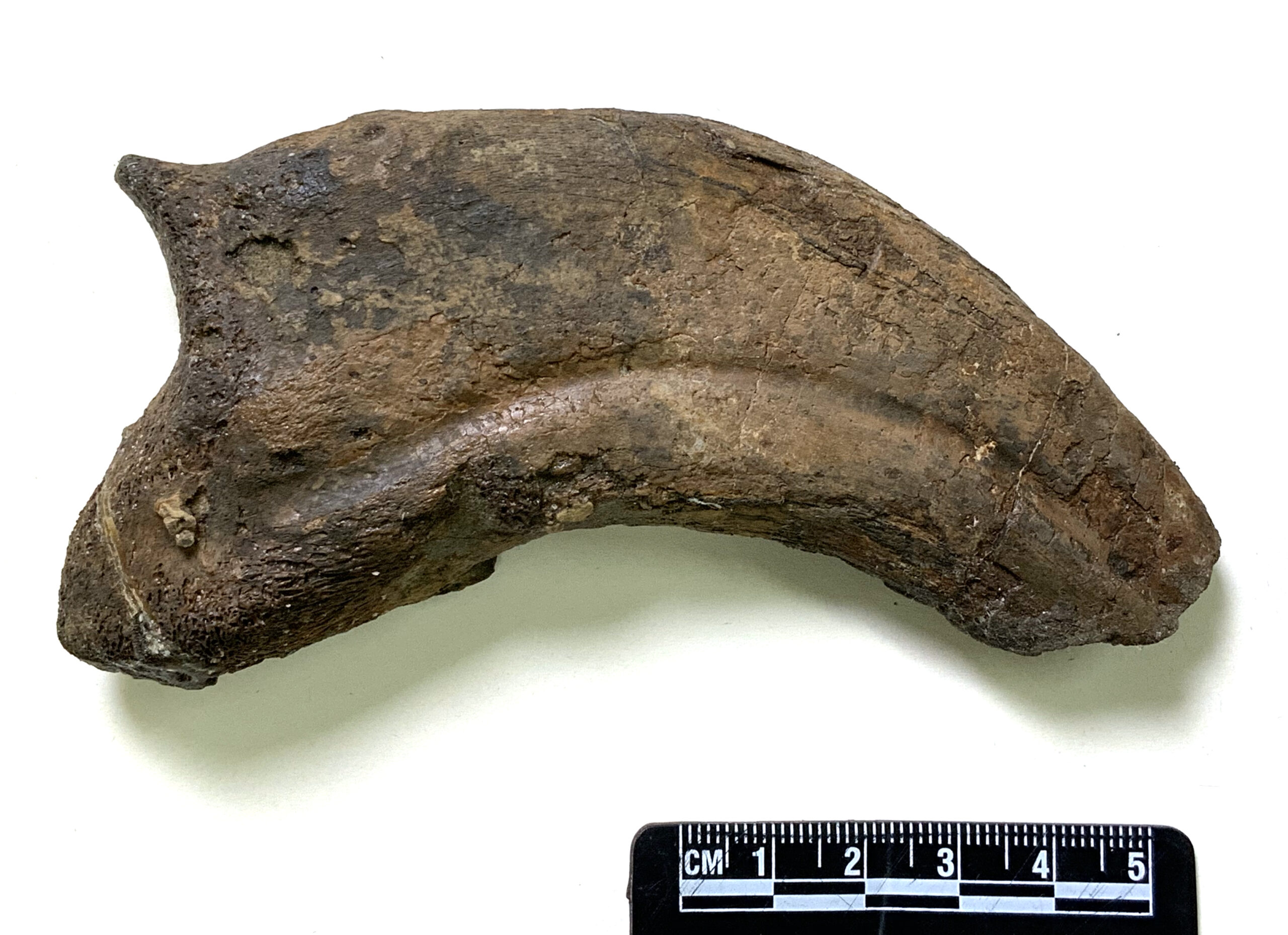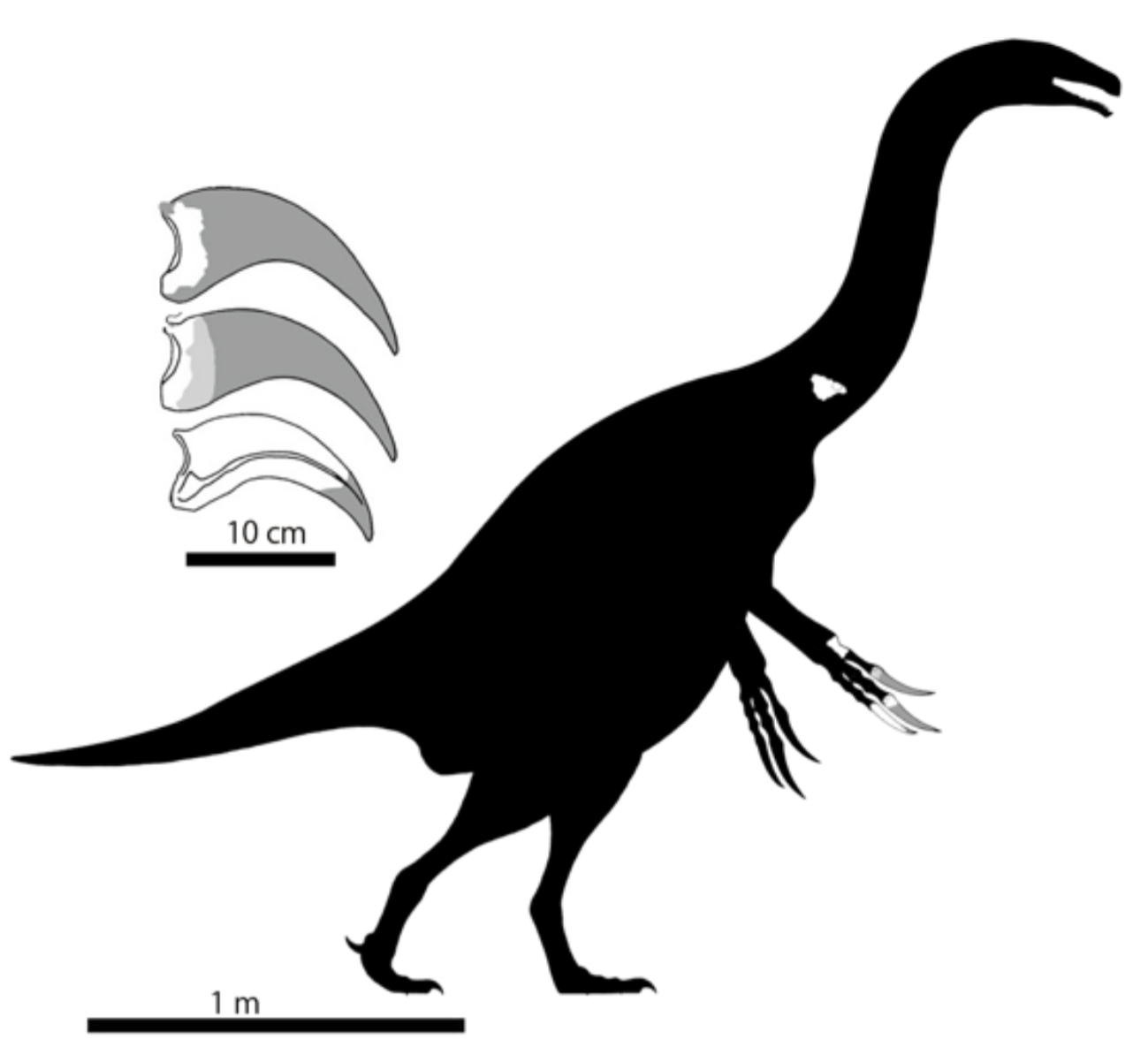
Researchers from Japan and the United States have described a new species of dinosaurs with fearsome claws that lived in coastal environments during the Early Cretaceous through the Late Cretaceous.
Ladies and gents, meet Paralitherizinosaurus Japonicus.
Researchers describe the youngest therizinosaurian fossil found in Japan from marine sediment in a study published in Scientific Reports.
Experts say that this is the first such fossil to have been discovered in Asia.
Scientists have discovered a new, never-before-seen dinosaur belonging to the Therizinosaurs species.
NEWSLETTER
Never miss a news release from the Curiosmos team.
From what we know about them, the Therizinosaurs are thought to have been a large group of primarily herbivorous theropod dinosaurs (dinosaurs with hollow bones and three-toed limbs). Fossil records from Asian countries, including China and Mongolia, are abundant in therizinosaurus fossils, and fragments have been found in Japan.
Scientists from Japan and the United States, led by Yoshitsugu Kobayashi at the Hokkaido University Museum and Anthony Fiorillo at Southern Methodist University (SMU), describe a new species of therizinosaur from Japan and explain how the claws on therizinosaurs function.
Researchers published their findings in Scientific Reports.
The fossilized remains discussed in the new paper are comprised of partial vertebrae, wrist, and forefoot, which were originally collected in 2008 from the Osoushinai Formation, a fossil-filled geological formation in Nakagawa, Hokkaido. This fossil was described at the time as being from a manitoraptan dinosaur and believed to belong to a therizinosaur. However, there was no comparative data at the time, making confirmation impossible.
Recent advances had led to new data that allowed scientists to classify therizinosaurian species based on the morphology of the forefoot claws. Japan is home to three therizinosaurs, but two of them haven’t yet been described.

Therizinosaurs lived in Asia from the Early Cretaceous through the Late Cretaceous, and their hands had enormous claws. Therizinosaurs are divided into basal therizinosaurs and derived (advanced) therizinosaurs according to the morphology of their claws, which relates to their function.
In a comparison of claws from many other therizinosaur species, scientists compared them to those from a new species of therinizosaur, Paralitherizinosaurus japonicus (reaper reptile by the sea from Japan). Based on a study of four shared and derived characters, P. Japonicus was assigned to the derived therizinosaurs.
“Our study demonstrates that it is a new taxon, Paralitherizinosaurus japonicus gen. et sp. nov., because it shows a unique combination of characters in the metacarpal I and unguals,” researchers reported in the study.
It appears that basal therizinosaurian claws were morphologically generic and not specialized for a particular purpose. In contrast, derived therizinosaurian claws focused on hooking and pulling vegetation to the mouth for feeding.
As per the new research, P. Japonicus is the earliest therizinosaur found in Japan.
This discovery shows that therizinosaurus species existed in Asia for much longer periods of time and in a much larger geographical area than previously believed. Moreover, it is the first record of a therizinosaur from marine sediments in Asia. These findings, along with a fossil from Utah, USA, suggest some of the derived therizinosaurians thrived in coastal climates.
“This study also tells us how much more we still have to learn about the incredible history of life on Earth,” revealed Fiorillo, a research professor in SMU’s Roy M. Huffington Department of Earth Sciences.
Join the discussion and participate in awesome giveaways in our mobile Telegram group. Join Curiosmos on Telegram Today. t.me/Curiosmos
© 2022 Petri Pixel. All rights reserved. This material may not be published, broadcast, rewritten or redistributed without permission.





